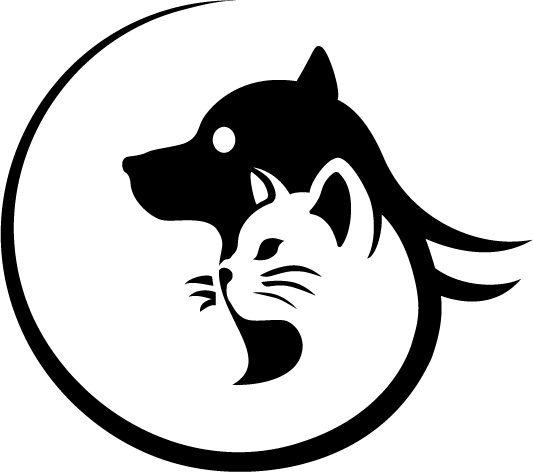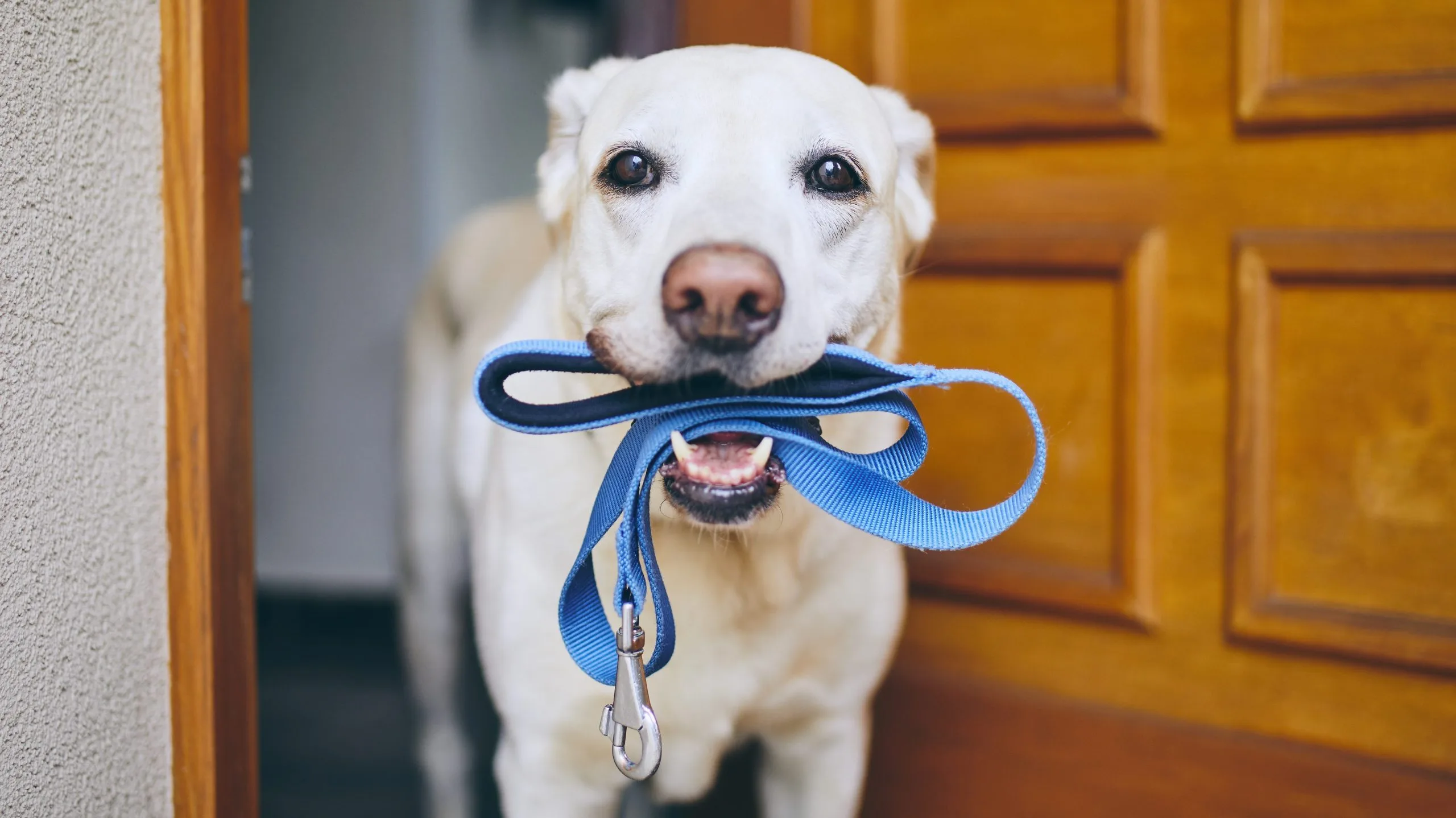Dog collars go through a lot. From daily walks and playtime in the park to the occasional roll in the mud, they’re constantly exposed to dirt, sweat, food crumbs, and sometimes even that mysterious “doggy smell.” A clean collar not only looks good but also keeps your pup comfortable and healthy.
If you’ve ever wondered how to clean dog collars without damaging them, you’re in the right place. Let’s break down the best way to clean dog collars—step by step, based on different materials—along with tips to keep them fresher for longer.
Why Cleaning Dog Collars Matters
- Dogs wear collars almost everywhere—walks, play, rain, rolling in grass—so collars accumulate dirt, bacteria, sweat, odor, and even parasites or tick debris.
- Dirty collars can irritate the skin (rashes, hot spots), cause odor, may harbour germs or mildew.
- Well maintained collars last longer—saving you money.
- Clean collars preserve appearance (colours, tags, hardware) and functionality (buckles, clasps).
How Often Should You Clean Dog Collars
- Ideally every few weeks—about the same frequency you wash your dog.
- Immediately after exposure to mud, pond water, strong smells, chemicals, or when you see visible dirt or smell odor.
- For active dogs, collars may need cleaning more frequently.
- If collar material is leather or delicate, clean less aggressively but more routinely (spot cleaning etc.).
Materials: Understanding What Kind of Collar You Have
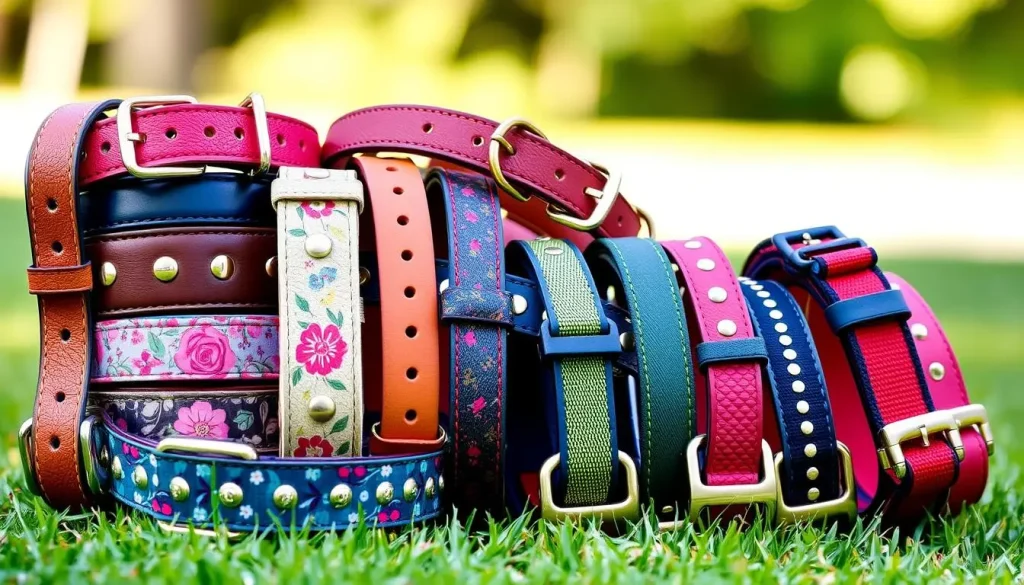
Different materials require different cleaning methods. Knowing what material your dog collar is made from is essential. Common types:
| Material | Pros | Cleaning Considerations |
| Synthetic / Nylon / Polyester | Durable, easy to clean, dries fast | Can fade or fray; machine washing possible if tag allows; avoid strong heat |
| Cloth / Fabric | Comfortable, many patterns available | May retain odor; shrinkage risk; careful machine or hand washing needed |
| Leather | Durable, classic look, less irritating for some dogs | Sensitive to heat, water can damage; use leather‑safe cleansers and conditioners |
| Vegan Leather / Faux Leather | Animal‑friendly; often easier to clean than real leather | Avoid harsh cleaners; sun can crack; spot cleaning may be needed |
| Metal / Chain Links / Hardware | Durable, doesn’t absorb odors; sturdy | Joints can trap dirt; risk of rust; drying thoroughly is key |
Best Way to Clean Dog Collars: Step by Step for Each Material
Here’s a detailed, material‑by‑material guide on how to clean dog collars in the best way, drawing from sources like Spark Paws, BullyBillows, West & Willow, and combining with practical advice.
A. Synthetic / Nylon / Polyester Collars
- Remove any tags, pendants, decorative pieces.
- Pre‑brush off loose dirt (use soft brush or cloth).
- Hand wash method: Soak in warm (not hot) water with mild, dog‑safe detergent or dog shampoo for ~15‑20 mins. Rub gently (use fingers or a soft brush) to lift stains.
- Machine wash method (if the collar tag indicates safe): Put collar in a mesh laundry bag to avoid tangling or fraying. Use gentle cycle, cold or warm water, mild detergent. Avoid bleach.
- Rinse thoroughly with clean water.
- Air dry—flat or hung in shade. Avoid direct sunlight or strong heat (sunlight can fade colours; heat can degrade synthetic fibres).
B. Fabric / Cloth Collars
- Very similar to synthetic cleaning, but extra caution for shrinkage or colour run.
- Pre‑treat stains (e.g. with baking soda paste or pet‑safe stain remover).
- Soak in warm water + dog‑safe soap; scrub gently with soft toothbrush especially on seams and edges.
- Rinse well.
- Dry flat to keep shape; avoid wringing (twisting) fabric harshly.
C. Leather Collars
- Remove hardware (if possible).
- Use a damp cloth or sponge with a lather of water + dog‑safe, non‑scented mild soap. Do NOT soak the whole collar.
- Gently clean in circular motions. Avoid aggressive scrubbing.
- Wipe off soap with a separate damp cloth.
- Dry naturally in shade (no direct sunlight, no heat sources).
- Condition leather using leather conditioner or cream after it’s dry to restore suppleness and prevent cracking.
D. Vegan Leather / Faux Leather Collars
- Use pet‑safe soap + warm water.
- Spot cleaning is effective for fresh dirt. Wash full collar only when needed.
- Wipe instead of soak; leather‑like coatings may flake or crack if saturated.
- Dry flat, away from direct sun.
E. Metal / Chain Link / Hardware Elements
- Use a soft brush (old toothbrush works) + mild soap or shampoo in warm water.
- For rust spots: baking soda paste (baking soda + water), apply, let sit, scrub gently. Rinse and dry fully.
- Make sure small spaces between links are cleaned (dirt or moisture trapped there can cause corrosion).
- Dry completely (towel + air) before putting back on dog.
Odor Removal & Deodorizing Tips
Dirt isn’t the only issue; collars often smell. Here are reliable ways to remove odor:
- Baking Soda Soak or Paste: Soak collar (if material allows) in water with baking soda; or make a paste, scrub, rinse.
- Vinegar Solution: Mix water + white vinegar (only for synthetic/fabric collars), soak briefly, rinse well. Avoid using on leather or metal.
- Pet‑Safe Soaps or Shampoos (with mild, pleasant scents). Some scented soaps (lavender, mint etc.) help mask or remove odor.
- Sunlight (indirect): Fresh air and sunlight can kill bacteria and air out odor—but avoid intense direct sun for sensitive materials.
Tools & Supplies You’ll Need
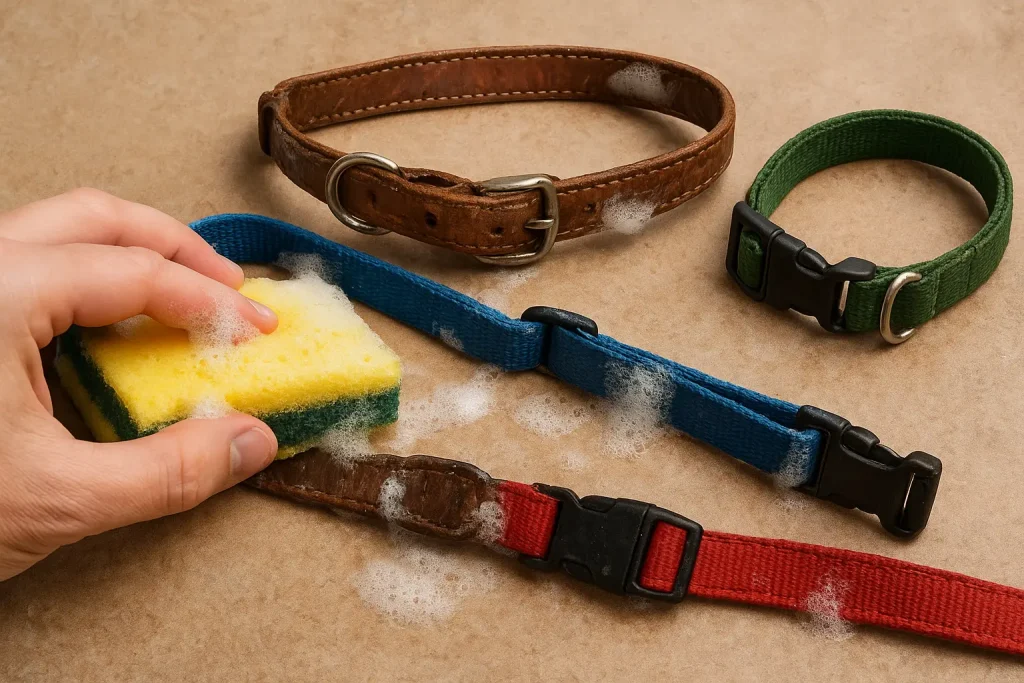
Cleaning your dog’s collar doesn’t have to be a chore—especially when you’ve got the right tools on hand. Here’s a quick list to make the job easier and more effective:
- Dog-safe shampoo or mild detergent: Gentle on your pup’s skin, but tough on dirt and grime.
- Soft-bristled brush or old toothbrush: Perfect for scrubbing out mud, slobber, and food bits from stitching or buckles.
- Clean cloths or soft sponges: For wiping down the collar without damaging the material.
- Mesh laundry bag: If the collar is machine washable, toss it in this bag to protect it during the cycle.
- Baking soda + white vinegar: A natural duo that helps tackle strong odors and stubborn stains.
- Leather conditioner: Keeps leather collars soft, crack-free, and looking brand new.
- Warm water bowl or sink: Just enough to soak or rinse without making a mess.
Tip: Keep a small “collar care kit” at home so you’re always ready for quick clean-ups after muddy walks or beach days!
Choosing Collars That Are Easy to Clean
If you want an easy to clean dog collars upfront, consider:
- Materials: synthetic/nylon, waterproof webbing, quick‑dry fabric, vegan leather over real leather
- Simplicity of design: fewer bits, no delicate decorations, detachable tags that are easy to remove
- Hardware: rust‑proof metals, stainless steel D‑rings, solid buckles
- Machine washable when possible
Common Mistakes & How to Avoid Them
| Mistake | Why It’s Problematic | How to Avoid |
| Using harsh detergents / bleach | Causes skin irritation; damages fabric/leather | Always use pet‑safe, mild soaps |
| Soaking leather or vegan leather | Water damage; cracking or peeling | Spot clean; use minimal water; dry properly; condition leather |
| Using high heat / direct sun to dry | Colors fade; materials warp or shrink | Air dry in shade; avoid dryers or radiators |
| Ignoring hardware / rust spots | Breakdown of collars; discomfort for dog | Clean hardware separately; dry fully |
| Waiting too long to clean | Odor, bacteria buildup, skin irritation | Clean regularly; after exposed to dirt or odor |
Safety & Health Considerations
- Always remove the collar before cleaning and make sure it’s fully dry before putting back on. Wet collars can trap moisture and irritate skin.
- Inspect your dog’s skin regularly—when you clean the collar, check for redness, sores, odor, hair loss, flaking skin near collar. If anything suspicious, consult a vet.
- For dogs with allergies or sensitive skin, test any new cleaning agent on a small section first (or consult vet). Use unscented options.
Signs It’s Time to Replace Your Dog’s Collar
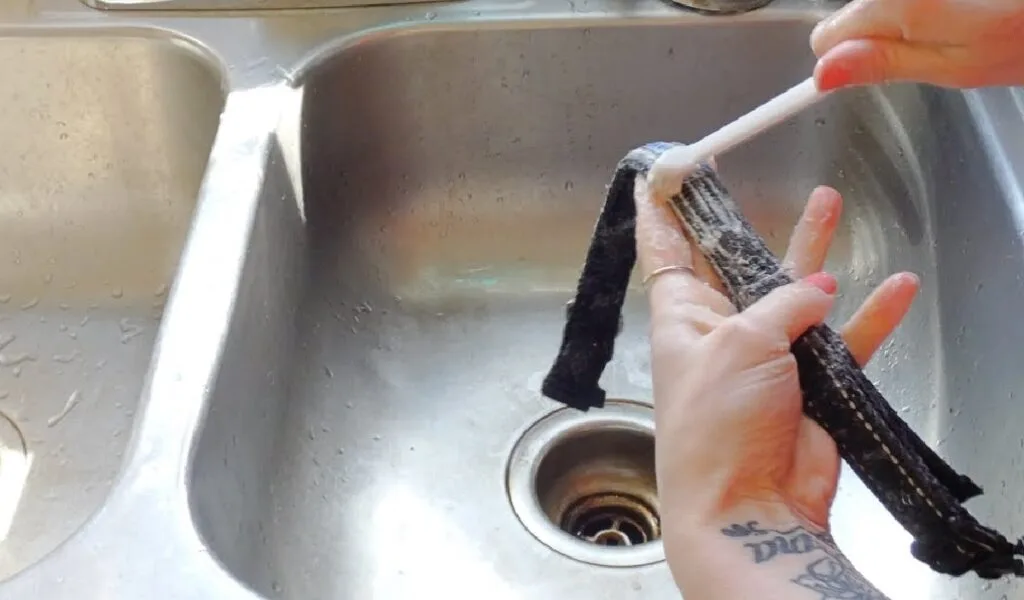
No matter how high-quality it is, every dog collar has a lifespan. Replacing it at the right time keeps your dog safe and comfortable. Watch for these signs:
- Fraying or Tearing: If threads are coming loose or edges are worn, the collar could snap when your dog pulls.
- Rusty or Loose Hardware: Metal parts that rust or don’t fasten properly can be a safety hazard.
- Cracked or Stiff Material: Especially in leather or older collars, cracks can dig into your dog’s skin or cause irritation.
- Persistent Odors or Stains: If a collar still smells bad or looks dirty after cleaning, it may be holding bacteria.
- Poor Fit: A collar that’s too tight can choke your pup, while one that’s too loose may slip off easily.
Check your dog’s collar every few weeks and replace it if you notice any of these signs. A well-fitting, clean collar means a happier, safer dog.
FAQs
Conclusion
Cleaning your dog’s collar is one of those small tasks that makes a big difference. When done right, it keeps your dog comfortable, odor‑free, and protects their skin, while also extending the life of a collar. Whether synthetic, fabric, leather, or chain, use the specific methods above, do it regularly, choose easy‑clean materials up front, and replace when worn. For more tips on dog care and gear, check out:
- The Ultimate Guide to Dog Collars
- Best Dog Collars for Different Breeds and Sizes
- Top 10 Smart Dog Collars in 2025
At the end of the day, a clean collar isn’t just about looks—it’s about your dog’s health, safety, and happiness.
Last Updated on September 29, 2025 by furryadminblog
